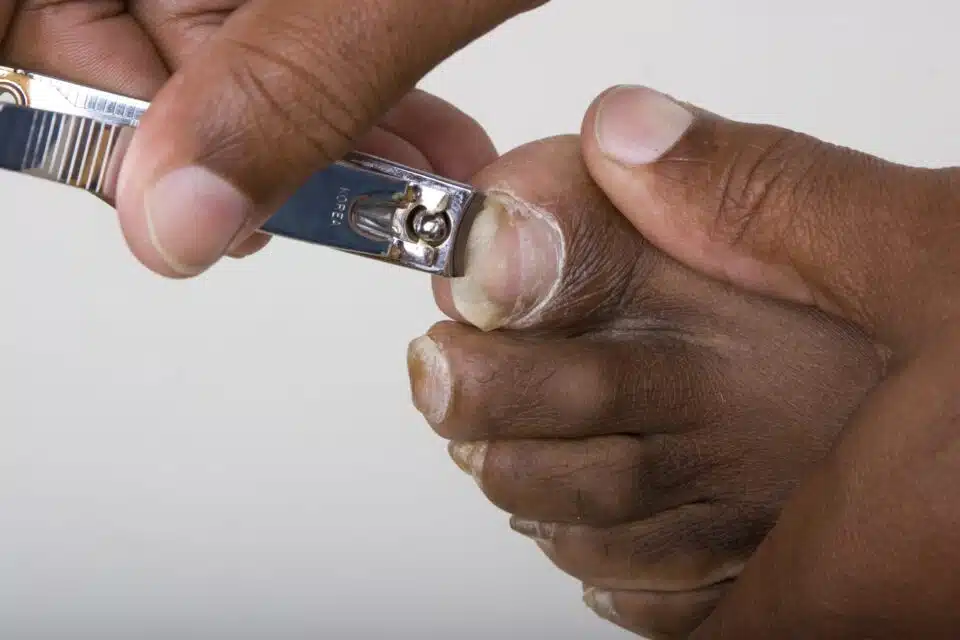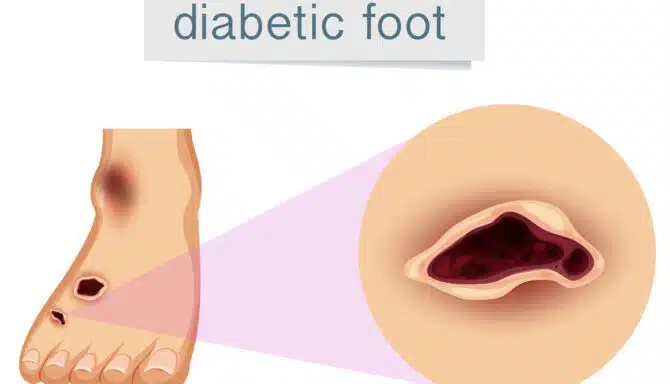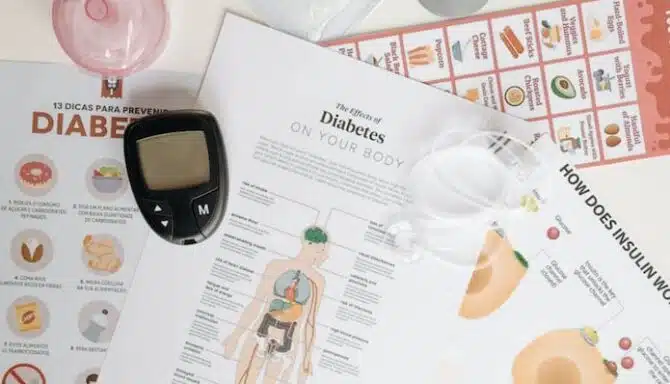Our feet and toes change in various ways as we age. One of these changes is toenail thickening.
For some of us, toenail thickening can be more than just a minor inconvenience. It can make it difficult to cut and maintain our toenails, and can even cause pain and discomfort. In this article, we’ll explain the causes of thickened toenails, and some possible treatments.
Why Do Toenails Thicken with Age?
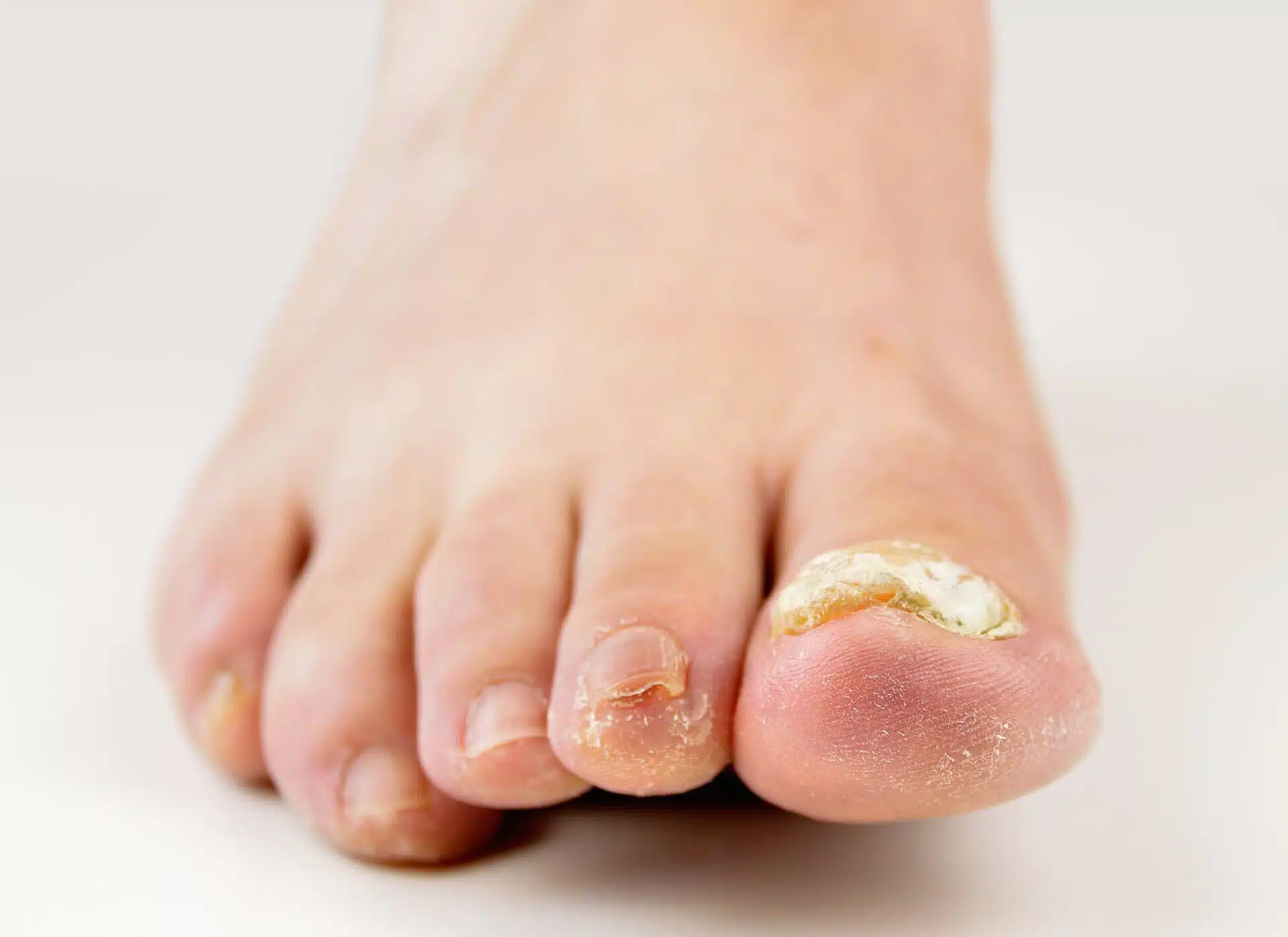
Nails are made from a protein called keratin, which is produced at the nail plate at the base of the nail. Nail growth happens when nail cells multiply within the base of the nail and are pushed forward. However, as we age, the growth rate slows down, so the nail cells just pile up on top of each other, which causes them to get increasingly thicker.
Toenail thickening is often a result of several factors:
Reduced blood circulation
The most common cause of toenail thickening is decreased blood circulation to our feet. This diminished circulation means fewer nutrients and oxygen reach the toenails, causing them to thicken over time. Age is one of the risk factor for reduced blood circulation to the feet.
Natural wear and tear

Years of use can damage our toenails. Factors such as ill-fitting shoes, repetitive stress from activities like running or walking, and even minor trauma can contribute to thickening. Essentially, when our toenails experience trauma, they thicken to protect themselves. As we age, wear and tear on our toenails can accumulate, which can cause them to thicken.
Fungal infections
Older individuals are more prone to fungal infections of the toenails, which can cause thickening, discoloration, and brittleness. These infections often thrive in warm, moist environments like sweaty shoes or communal areas.
Underlying health conditions
Medical conditions like psoriasis, diabetes, and peripheral arterial disease can also influence toenail health. These conditions affect circulation, which in turn slows toenail growth and causes toenails to thicken.
Tips for toenail care as you age
As you age, proactive steps can be taken to maintain healthy toenails and minimize thickening. By following these tips, you can feel more in control of your foot health and well-being.
Regular trimming
Toenail thickening can make trimming and maintaining your toenails extremely difficult. Fortunately, a licensed chiropodist is trained to specifically deal with this. A licensed chiropodist can ensure your toenails are trimmed properly to prevent ingrown toenails, promote healthy toenail growth and reduce thickening. A licensed chiropodist can also use special tools over the toenail to thin it out, which will make the toenail easier to cut and maintain. Best of all, this is all done in a sterilized environment, so you don’t need to worry about fungal infections (did you know 52% of people get fungal infections after visiting nail salons?) If you decide to trim your toenails at home, make sure you invest in quality toenail clippers and avoid cutting them too short.
Proper foot hygiene

Wash your feet daily with soap and water, ensuring they dry thoroughly, especially between the toes. Also, wear flip flops in public spaces to avoid contracting fungal infections.
Comfortable footwear
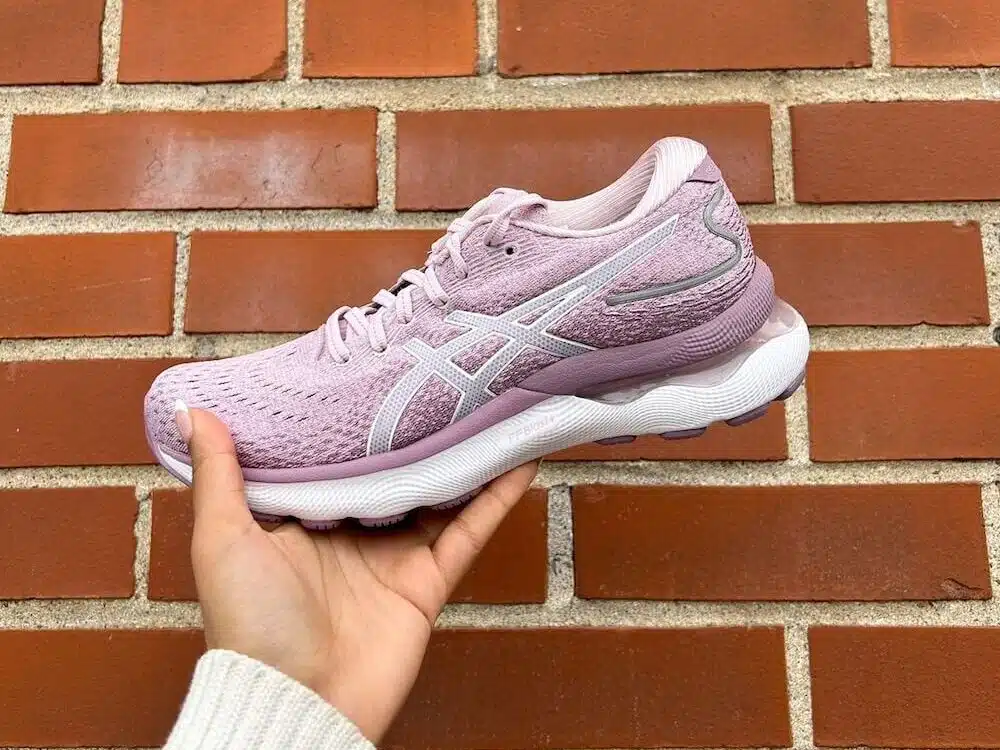
Choose shoes that fit well and provide adequate support. Avoid narrow or tight shoes that can put pressure the toenails and contribute to thickening.
Moisturize regularly
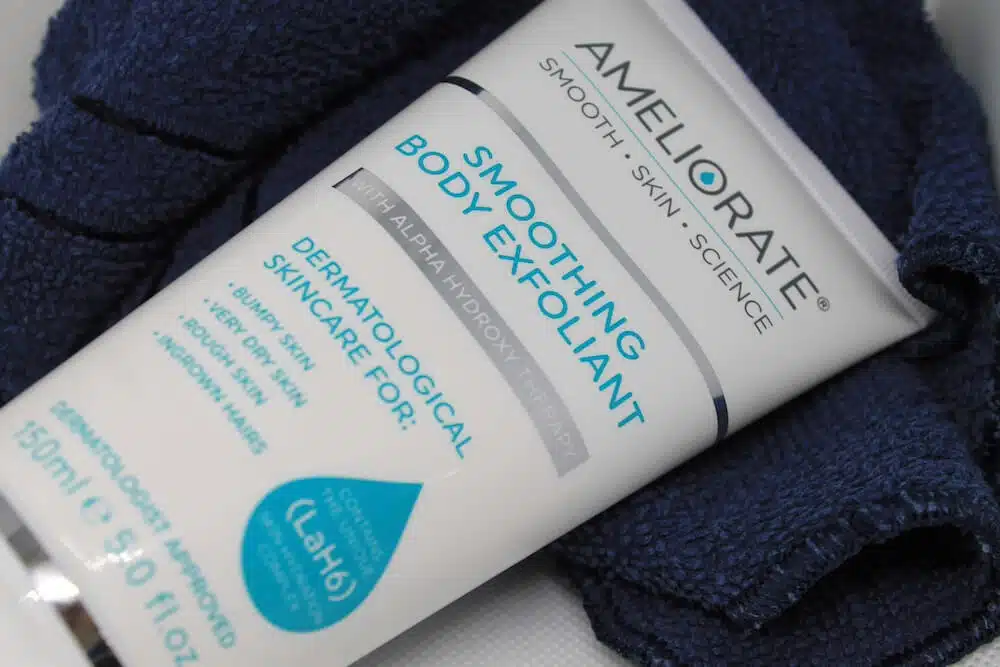
Apply moisturizer to your feet to keep the skin and nails hydrated. This can prevent cracking and thickening of the toenails, especially in dry climates.
Foot protection

Wear protective footwear in risky environments like communal areas or outdoors. This can help prevent injury and reduce the risk of fungal infections.
Manage underlying conditions
If you have underlying health issues like diabetes, it’s important to remember that they can be effectively managed. By working closely with your healthcare provider, you can improve foot circulation and reduce the risk of complications like toenail thickening.
